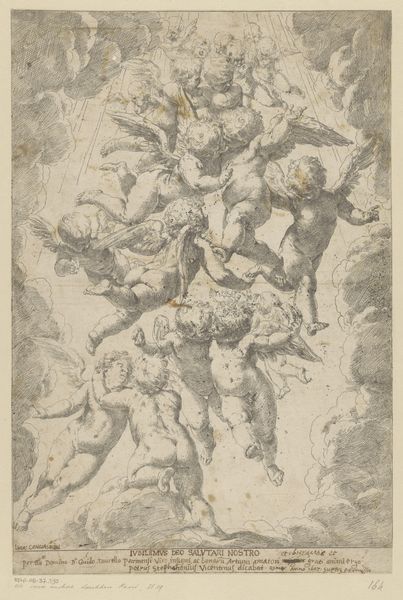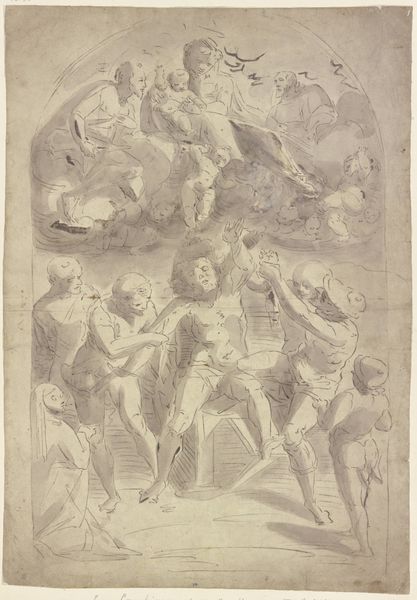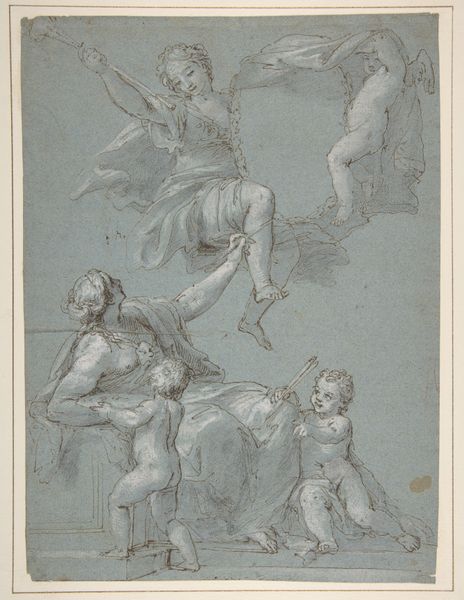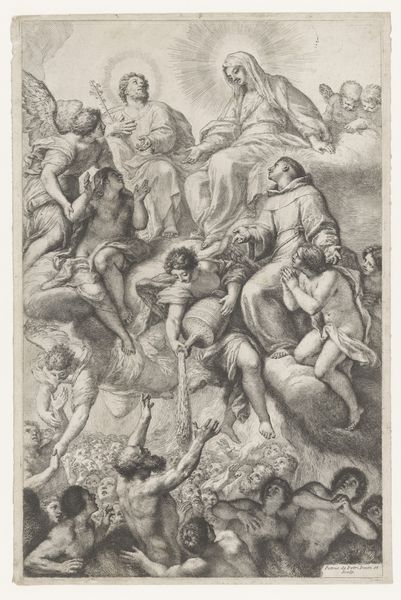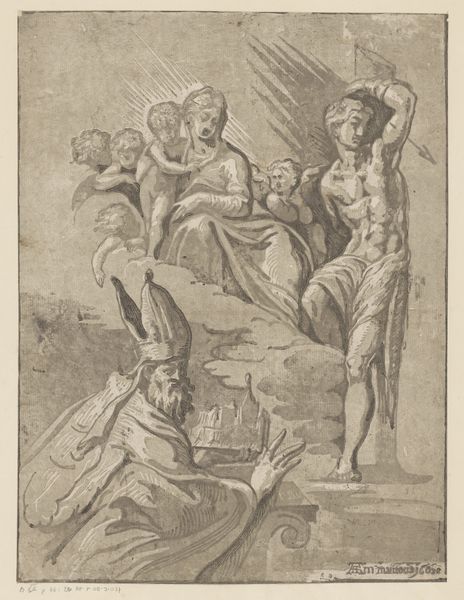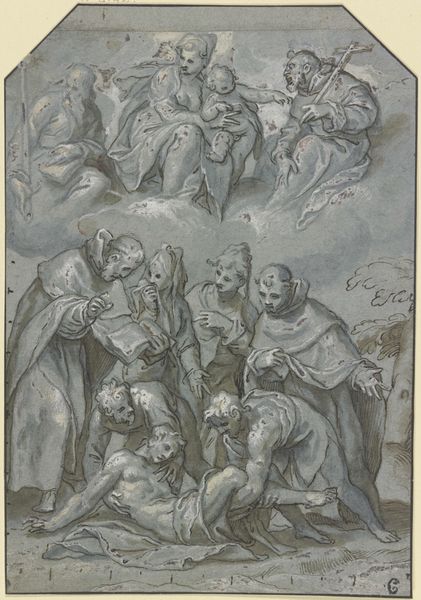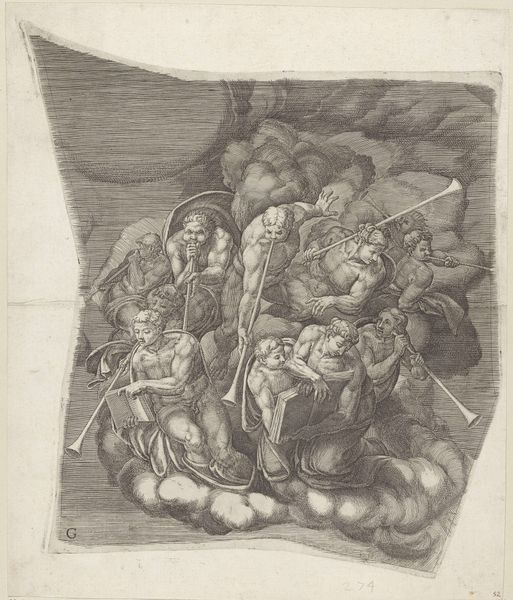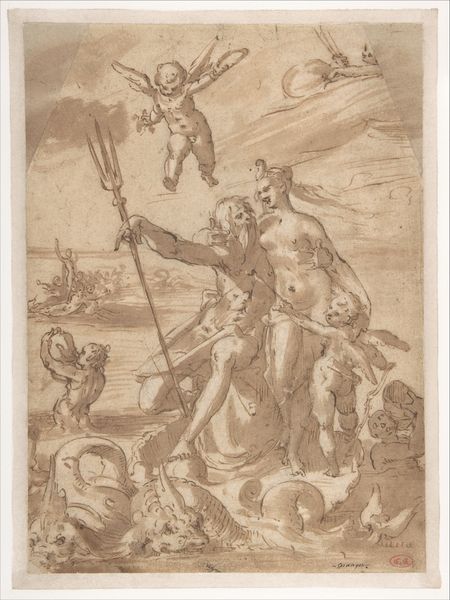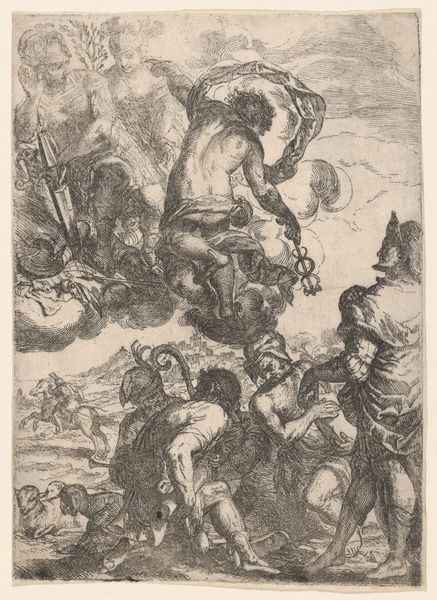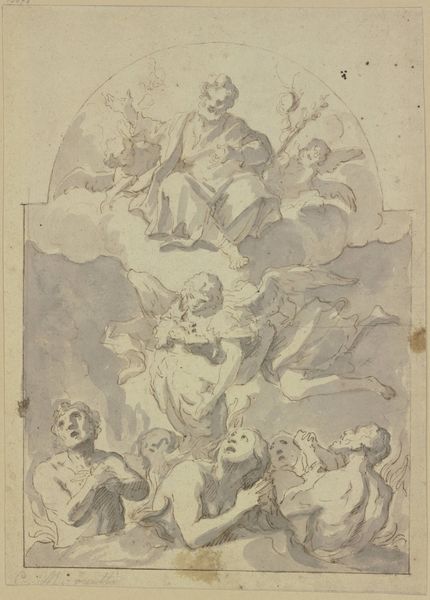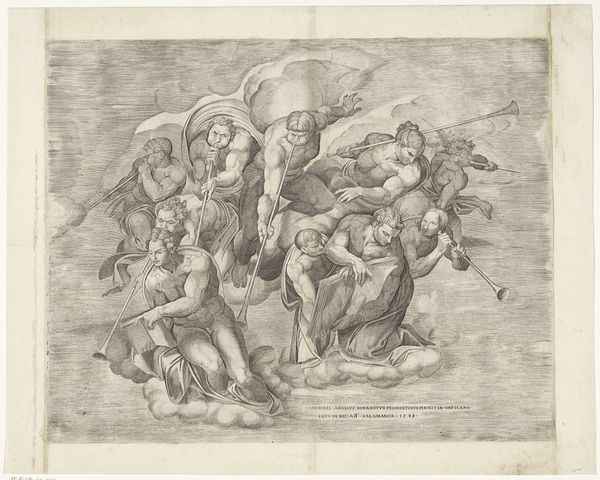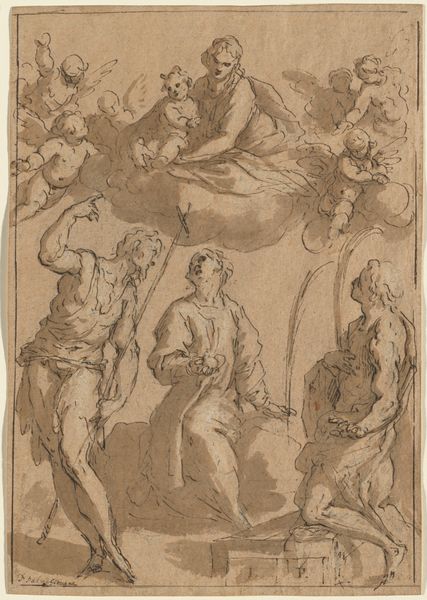
drawing, ink
#
drawing
#
allegory
#
figuration
#
11_renaissance
#
ink
#
history-painting
Dimensions: 510 mm (height) x 411 mm (width) (bladmaal)
Curator: Here we have an allegorical drawing from between 1528 and 1588, its creator currently unknown. It’s entitled “An Allegory of Love: Unfaithfulness” and is done in ink. Editor: My immediate impression is one of conflicting forces. There's a tension created by the opposition of earthly and ethereal realms within a clear structure. It suggests to me not so much the high drama but the careful assessment that precedes inevitable actions. Curator: Allegory was incredibly popular in Renaissance art, wasn't it? This piece presents us with a female figure being pulled in two directions by two men, with another gathering of figures overseeing from above. It visually translates the conflict of choosing between love, duty, desire…all conveyed through established iconography. Editor: What really strikes me are the clear distinctions in how this piece has been physically crafted. It is after all a drawing, lines over what seem like colored grounds. Notice how the sky borne figures seem lighter, airier – thin wash grounds, finely delineated figures— compared to the heavier figures occupying the terrestrial ground, and the way their clothing marks their differing status. I'm interested in what different papers and perhaps metal point tools were used. Curator: It speaks volumes about the societal pressures surrounding love and commitment at the time. The upper gathering feels like a council of virtues or gods. What do they represent? Perhaps Judgment or divine observation. Editor: Well, I see a social fabric under strain here. There's clearly economic power and production concentrated in one group, visible on ground, literally forcing apart two distinct types. In a situation such as this one, I think what matters is knowing the material culture from which this piece emerged – who created these tools to what end? Curator: Right. Thinking about this ‘separation’, though – I can't help but feel the weight of choices. Each figure here, bound to the others by ink, represents different pathways of consequence, even guilt, in that pre-ordained era. It serves as a cautionary tale on morality. Editor: For me, what endures isn’t the symbolic order—it is its making. I am most attracted by the marks and means deployed, a lasting artifact produced out of human work to render material those conflicts.
Comments
No comments
Be the first to comment and join the conversation on the ultimate creative platform.
